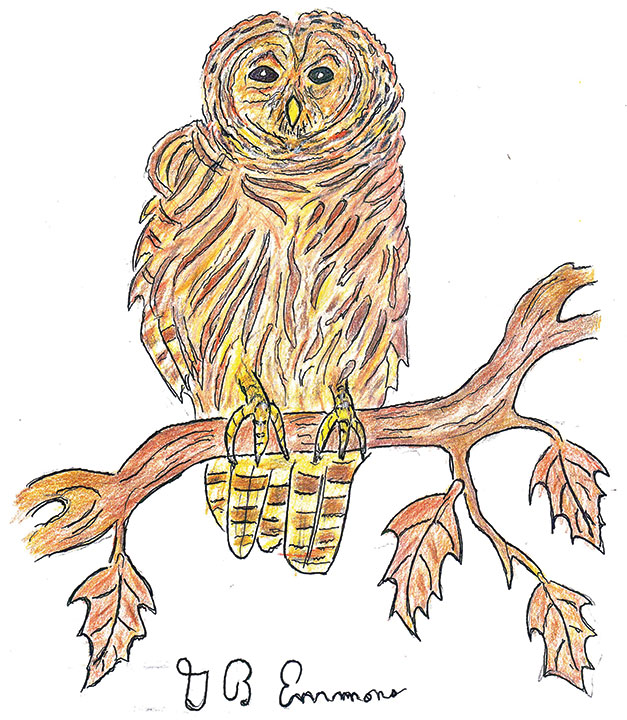The Barred Owl, Strix varia, often elicits a peculiar fascination. It’s not merely their striking appearance, with soulful dark eyes embedded within a dish-like facial disc, or their generously barred plumage that captures attention. There’s something more profound, a connection fostered perhaps by their accessibility, both auditory and visual, in a landscape increasingly dominated by human presence. They allow us a window into the wild, a glimpse of untamed nature coexisting, sometimes uneasily, alongside our own constructed world.
One of the first encounters most have with a Barred Owl is through its vocalizations. Their characteristic call, often rendered as “Who cooks for you? Who cooks for you-all?”, resonates through wooded areas, particularly during breeding season. This eight-note hoot is not merely a random utterance; it’s a complex form of communication. Delving deeper into the acoustic ecology of these owls reveals a rich tapestry of calls, each carrying specific meaning and function.
I. Unraveling the Vocal Repertoire
Beyond the signature hoot, Barred Owls possess an impressive array of vocalizations. These include barks, screams, gurgles, and even cackles, each employed in different contexts. Juvenile owls, for instance, emit a high-pitched begging call to solicit food from their parents. Territorial disputes often involve a series of guttural barks and agitated hoots, serving as warnings to potential rivals. Understanding this vocal complexity is key to deciphering the intricate social dynamics of these birds.
A. The Significance of Duets: Barred Owls frequently engage in duets, particularly during courtship and territory establishment. These coordinated vocalizations, performed by mated pairs, reinforce the pair bond and signal their presence to neighboring owls. The precision and synchronization of these duets are remarkable, showcasing a sophisticated level of communication and cooperation.
B. Variations in Dialect: Subtle variations in Barred Owl vocalizations exist across different geographic regions. These regional dialects, while not fully understood, suggest a degree of cultural transmission, with owls learning specific vocal patterns from their parents and neighbors. This adds another layer of complexity to their communication system, hinting at the potential for local traditions and nuanced meaning.
II. Habitat and Distribution: Adapting to a Changing Landscape
Originally inhabitants of the eastern deciduous forests of North America, Barred Owls have dramatically expanded their range westward over the past century. This expansion, facilitated by habitat alterations and increased forest fragmentation, has brought them into direct competition with other owl species, most notably the Spotted Owl in the Pacific Northwest. Their adaptability is a testament to their resilience, but also raises concerns about the ecological consequences of their expanding presence.
A. Preferred Habitats: Barred Owls thrive in mature forests with a mix of deciduous and coniferous trees, providing ample nesting cavities and hunting perches. They also frequent swamps, bottomland forests, and riparian areas, often close to water sources. The presence of snags, or standing dead trees, is crucial, as these provide essential nesting sites and foraging opportunities.
B. The Western Expansion: The westward expansion of Barred Owls has had significant implications for the Spotted Owl, a species already facing habitat loss due to logging. Barred Owls are larger, more aggressive, and more adaptable than Spotted Owls, allowing them to outcompete them for resources and even hybridize with them. This interspecific competition has become a major conservation concern, prompting ongoing debates about management strategies.
III. Hunting Strategies and Dietary Adaptations
Barred Owls are opportunistic predators, employing a variety of hunting strategies to capture their prey. They are primarily nocturnal hunters, relying on their exceptional hearing and keen eyesight to locate prey in low-light conditions. Their diet is diverse, reflecting their adaptability to different environments and prey availability.
A. Acoustic Location: The facial disc of the Barred Owl acts as a parabolic reflector, focusing sound waves towards their ears. This allows them to pinpoint the location of prey with remarkable accuracy, even in dense vegetation or under snow. They can detect the subtle rustling of a vole or the faint chirping of an insect from considerable distances.
B. Dietary Diversity: While rodents are a staple of their diet, Barred Owls also consume a wide range of other animals, including birds, amphibians, reptiles, fish, and invertebrates. They are known to forage in aquatic environments, catching crayfish, frogs, and even small fish. This dietary flexibility allows them to thrive in a variety of habitats and adapt to seasonal changes in prey availability.
IV. Conservation Status and Ongoing Challenges
Despite their expanding range, Barred Owls face several ongoing challenges. Habitat loss, fragmentation, and competition with other species remain significant threats. Climate change also poses a potential risk, altering habitat suitability and prey availability. Understanding these challenges is crucial for ensuring the long-term conservation of this fascinating species.
A. The Impact of Habitat Loss: Deforestation and urbanization continue to reduce the availability of suitable habitat for Barred Owls. This can lead to increased competition for resources, reduced breeding success, and increased vulnerability to predators. Protecting and restoring mature forests is essential for maintaining healthy Barred Owl populations.
B. The Dilemma of Interspecific Competition: The competition between Barred Owls and Spotted Owls presents a complex conservation dilemma. Managing Barred Owl populations in areas where they are impacting Spotted Owls is a controversial topic, with no easy solutions. Finding a balance between protecting both species requires careful consideration of ecological, ethical, and social factors.
The allure of the Barred Owl extends beyond its auditory presence or visual charisma. It’s a reminder of the wild within our world, a connection to a natural order that persists despite our encroachment. By understanding their vocalizations, their habitat needs, and the challenges they face, we can gain a deeper appreciation for these captivating birds and contribute to their continued survival in a rapidly changing world.
